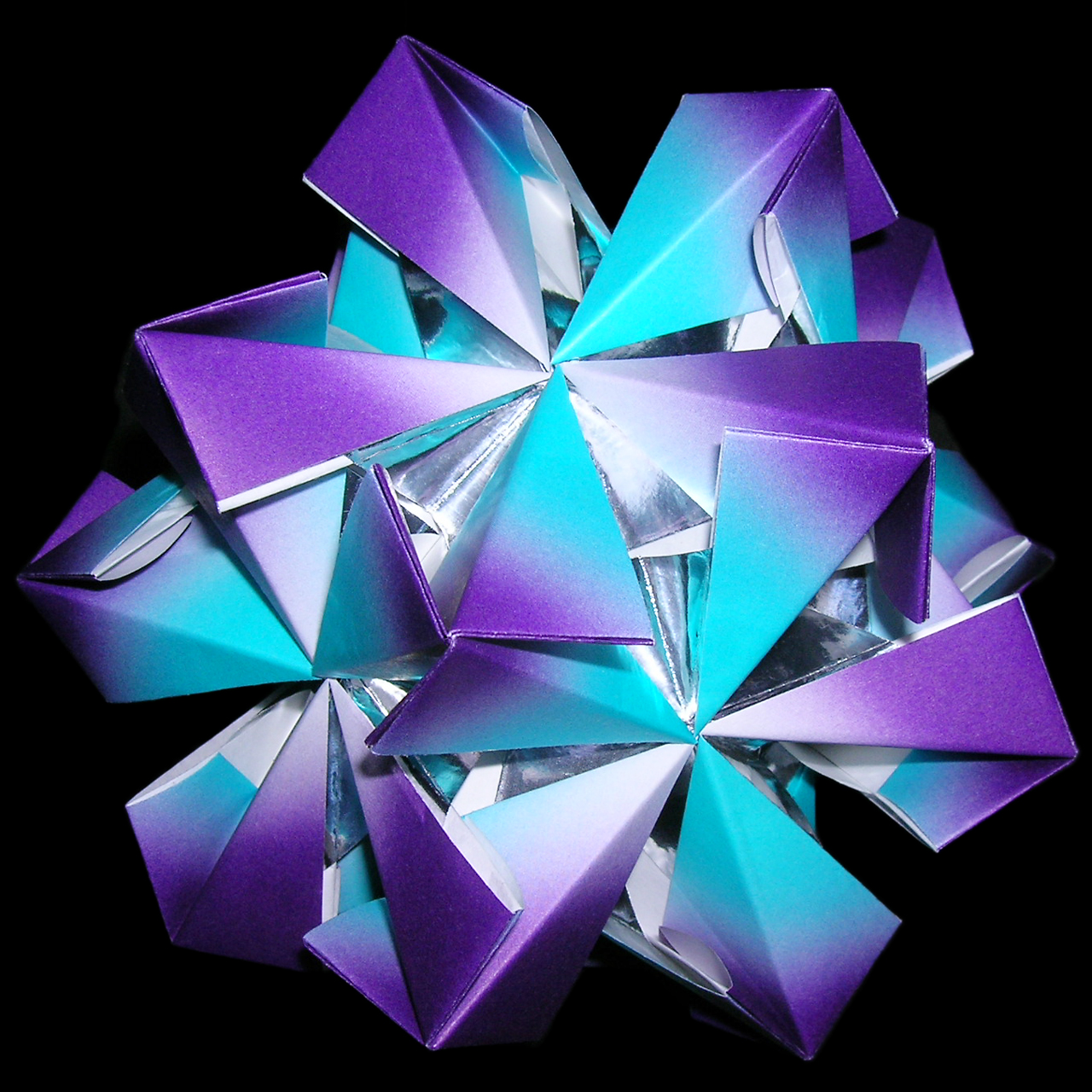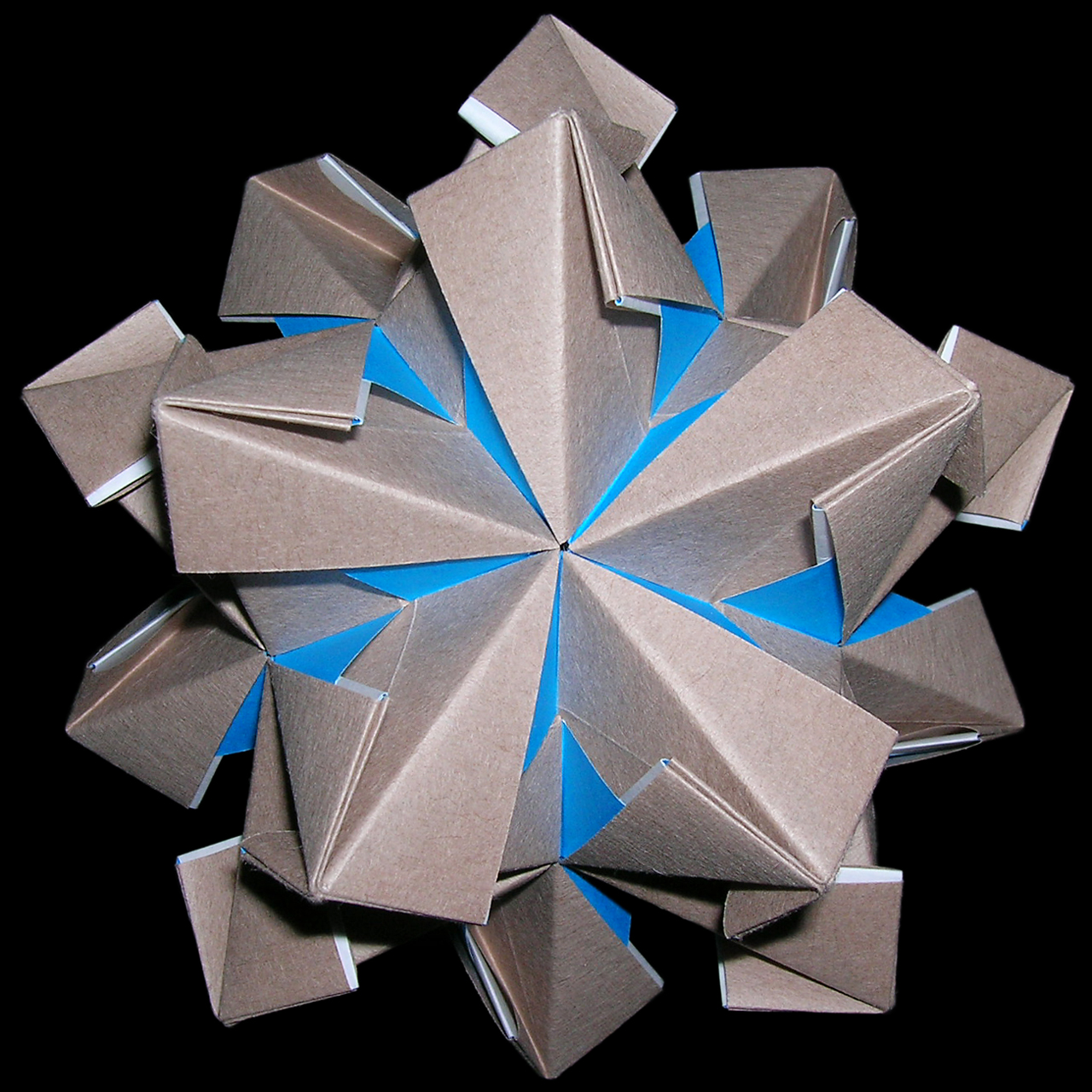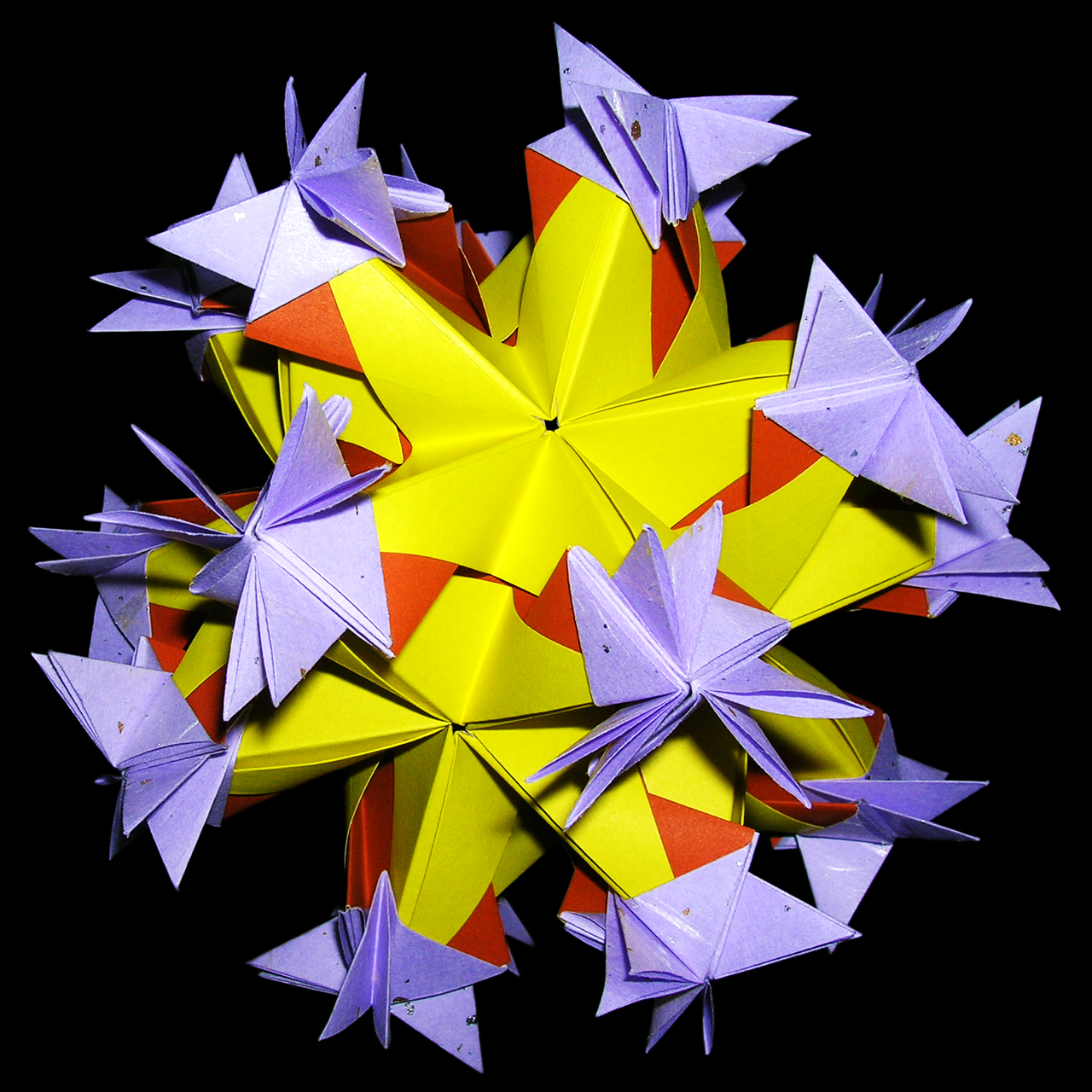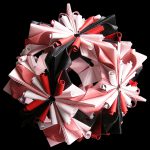


Work data
- Author
- Mio Tsugawa
- Creation date
- Mar. 2011
- Drawing
- Oct. 2017
- Parts
- 30 parts (60 pieces)
- Paper size
- 7.5 cm (Square) + 3.75 × 15cm
- Joining materials
- No use (No glued)
- Joining method
- Mulch modular joint, Rosette joint
Summary / 作品概要
This is a work whose parts will be assembled into the whole without glue, The joining method is “Rosette joint”, which use flaps and pockets like a model of most modular origami.
The difference of both “Flap and Pocket joint” and “Rosette joint” are only the direction whose Flaps insert into Pockets.
It’s simple to connect and assemble.
One part consists of two pieces, Piece A and Piece B.
These pieces will be also combined into one part without glue.
If you make them with different colors, it will be colorful work.
The diagram has one basic folding “Yubikiri”, how to combine pieces into one part and how to assemble parts into the whole, also include variations “Hari Senbon”.
MEMO
About the name of work “Yubikiri”, it means “link little fingers with somebody to confirm/emphasize a promise; Pinky swear.
“Hari Senbon” means,
Hari = a needle
Senbon = a thousand
Pinky swear is also included the meaning that “if you break our promises, I will make you swallow a thousand needles.”

接着剤を使わずに組み立てるモジュラータイプの作品です。
ジョイニングメソッドは、モジュラータイプでよく使われるフラップとポケットを使ってパーツ同士をつなぐ方法で、少し特殊な「ロゼッタジョイント」です。
「フラップ & ポケット ジョイント」と「ロゼッタジョイント」の違いは、フラップがポケットに差し込まれる方向のみ。それ以外の違いはありません。
とてもシンプルなつなぎ方で、組み方もシンプルです。
ひとつのパーツはふたつの部品から成り立っています。
ふたつの部品を組み合わせるときにも、接着剤は必要ありません。
このふたつの部品をそれぞれ違う色や柄にすると、とてもカラフルな作品にしあがります。どんな色や柄を使うかは、個性の発揮どころです。
折り図には「ゆびきり」の折り方、ひとつのパーツの作り方、パーツの全体の組み方、そしてバリエーションの「針千本」が含まれています。
Get the diagram / 折り図をゲット
The diagram is 330 JPY (Include tax).
折り図は1部 330円 (税込み)です。



Comments